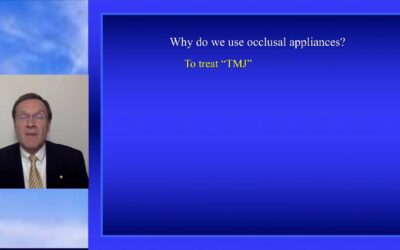Duration: 1 hour, 4 minutes, 8 seconds
Author: Dr. Bradley McAllister
The Diagnosis and Surgical Management of PeriImplantitis
The Prevalence of Periimplantitis
The talk will cover recent literature on the diagnosis and surgical management of periimplantitis. A review by the American Academy of Periodontology discussed the prevalence of periimplantitis, which can vary depending on the thresholds used for bone loss. It is important to understand and diagnose periimplantitis as it can affect 10-15% of implants, even with minimal estimates.
Importance of Maintaining Dental Implants
Maintenance of dental implants is crucial to prevent periimplantitis, as emphasized in a paper from 25 years ago by Dr. Meffert. Regular check-ups and proper oral hygiene can significantly reduce the risk of developing periimplantitis. Dentists and patients must work together to ensure the long-term success of dental implants.
Treatment Options for Periimplantitis
Another review on the therapy of periimplantitis by Dr. Mayfield provides a comprehensive overview of treatment options. Surgical management is often required to address periimplantitis effectively. Different surgical techniques and procedures may be utilized, depending on the severity of the condition and individual patient factors.
Non-surgical Approaches
Non-surgical approaches are typically the first line of treatment for mild to moderate cases of periimplantitis. These may include:
- Professional cleaning and debridement of the implant surface
- Administration of antibiotics to control infection
- Use of antimicrobial mouthwashes
- Subgingival irrigation to remove bacteria
Surgical Interventions
In cases where non-surgical approaches are ineffective or when periimplantitis is severe, surgical interventions may be necessary. Some common surgical procedures for periimplantitis include:
- Implantoplasty: Smoothing of the implant surface to remove contaminated portions
- Bone grafting: Regeneration of lost bone tissue around the implant
- Guided tissue regeneration: Placement of a barrier membrane to promote regrowth of healthy tissues
- Implant removal and replacement: In cases of extensive bone loss or implant failure, removal of the implant and placement of a new one may be required
Factors Affecting Treatment Decisions
When determining the most appropriate surgical approach, several factors need to be considered, including:
- Severity of periimplantitis
- Extent of bone loss
- Presence of infection
- Patient’s overall oral health
- Patient’s willingness to comply with post-operative care and maintenance
Conclusion
Periimplantitis is a common condition that can affect the long-term success of dental implants. Proper diagnosis, regular maintenance, and timely treatment are essential to prevent and manage periimplantitis effectively. Dental professionals should stay updated with the latest literature and treatment options to provide the best care for their patients.
Frequently Asked Questions
1. How can periimplantitis be diagnosed?
Periimplantitis can be diagnosed through a clinical examination, probing depth measurements, radiographic imaging, and assessment of clinical symptoms such as bleeding and inflammation around the implant.
2. Can periimplantitis be prevented?
While periimplantitis cannot be completely prevented, proper oral hygiene, regular dental visits, and adherence to maintenance protocols greatly reduce the risk of developing this condition.
3. Are there any home care practices that can help with periimplantitis?
Yes, maintaining good oral hygiene practices at home, including brushing twice a day, flossing, and using antimicrobial mouthwashes, can help prevent and manage periimplantitis.
4. How long does the recovery period take after surgical treatment for periimplantitis?
The recovery period after surgical treatment for periimplantitis varies depending on the individual case and the specific surgical procedures performed. It is essential to follow the post-operative instructions provided by the dentist for optimal healing.
5. Can dental implants be placed again after removal due to periimplantitis?
In some cases, dental implants can be placed again after removal due to periimplantitis. However, it is crucial to assess the patient’s oral health and bone quality before considering implant replacement.





Add comment